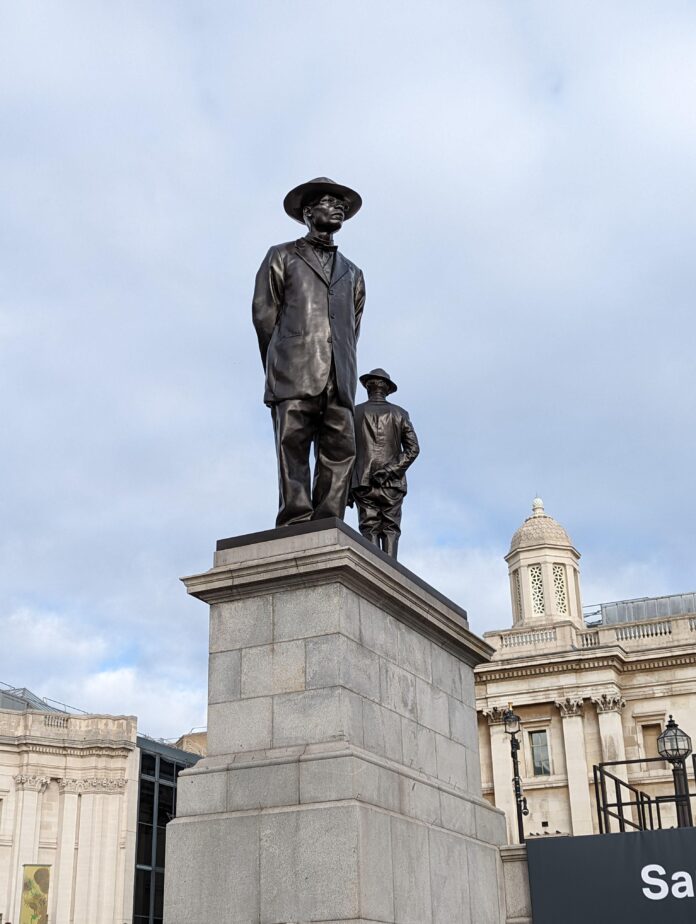For Africans living in early 20th-century Nyasaland, now Malawi, the simple act of wearing a hat in front a white man was considered an act of dissent. The latest statue for the Fourth Plinth in London’s Trafalgar Square—a public art platform that commissions contemporary sculpture—is similarly subversive.
Unlike nearly all of the 13 contemporary art commissions that have preceded it over the last 20 years, Antelope by Samson Kambalu is traditional in form—a figurative bronze sculpture of two men. One is the Baptist preacher and pan-Africanist John Chilembwe, who broke the rule on wearing hats at the opening of his new church in 1914, and died a year year later after leading a revolt against British rule. The other, half the size, is an English missionary, John Chorley. The figure of Chilembwe defiantly wears his hat, gazing across to the statue of George IV on the opposite plinth, under whose rule the British Empire rose to power.
Kambalu is an associate professor of fine art at the University of Oxford. At the unveiling he said simply: “I think this is where we could comfortably say that the British Empire turned into the Empire of the Antelope. I think Chilembwe’s gift to the world has been delivered.”
Ekow Eshun, the chairman of the Fourth Plinth commissioning group, said: “[The sculpture] speaks truth to power about how the peoples of the Empire continue to have a relationship with Britain, how these ties of place, nation and identity continue to resonate back and forth across the Atlantic, across continents.”
“There’s been so much talk of pulling monuments down. Today, we’re putting a new one up,” said Justine Simons, London’s deputy mayor for culture and the creative industries. “I hope this artwork will encourage us all to consider what colonialism means for the Britain of today. But I hope that learning about our history will encourage us all to be more mindful about how we shape the Britain of tomorrow.”
To coincide with the unveiling of the commission, Kambalu has published an updated version of his memoir, The Jive Talker: Or, How to get a British Passport, telling his story of growing up in Malawi and his journey to artistic and academic success.

Photo: James O’Jenkins
Meanwhile the debate about whether the plinth should be used for a statue of the recently deceased Queen Elizabeth II continues. It had been widely understood that the plinth—which was left empty when Trafalgar Square was created—was reserved for an equestrian statue of the Queen after her death.
Last week, the Conservative MP John Hayes called in parliament for a statue of the Queen, saying that the Fourth Plinth would be “ideal”, to shouts of agreement. The Public Statues and Sculpture Association have suggested creating a fifth plinth on the north side of the square so that the contemporary art programme could continue.
However, the chef and television presenter Prue Leith, who instigated the Fourth Plinth project while the chairperson of the Royal Society of Arts, told the Guardian: “I don’t think the Fourth Plinth is special enough for the Queen. I think there should be a statue for her outside Westminster Abbey where she was crowned. There’s a raised grass area that would be perfect—you’d see it from all sides. I did moot it at some point, but lost the energy to campaign for it. It took five years and 13 committees to get the fourth plinth on the road.”
Antelope is due to stay in situ until 2024, followed by 50 Improntas (850 Imprints) by Teresa Margolles, which will feature casts of the faces of 850 trans people from London and around the world, presented in a form inspired by Mesoamerican sculptures.

























